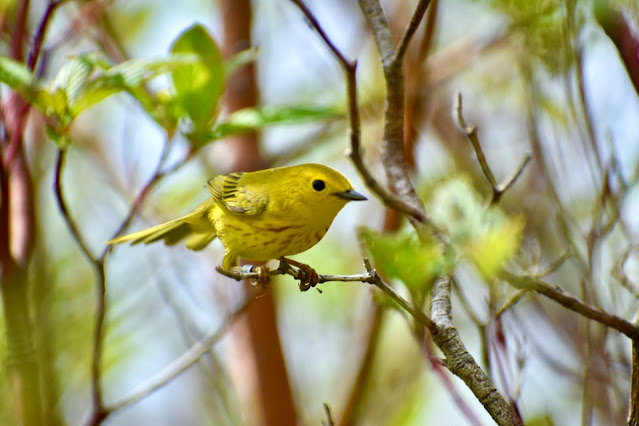If you spend any time observing birds, you have certainly noticed that they all have beaks. However, what we characterize as a beak can differ quite drastically from species to species. Why is that? It is dependent on their life history traits. Think of what that bird eats and how their beak can be best shaped to help them accomplish that. You could sort beak type by what the bird eats, or how they do so.
Let's break down some beak styles by what they help birds accomplish!
1. Chiseling
If you need to chisel through wood to find insects and create your nests, you need a beak that allows you to do so! Woodpeckers have beaks with chisel like tips. If you've ever wondered how they don't get splitting headaches - woodpeckers have evolved to have a special system to protect their brains. Unlike humans who have a liquid-filled case surrounding their brains, woodpeckers have strong muscles tightly cradling their brains to help protect them from injury while hammering into a hard tree. You can read our full blog on fun facts about woodpeckers here.
 |
| Pileated Woodpecker. Photo by Leanne LeBlanc. |
2. Cracking
If you eat seeds, you need to be able to crack them open. Birds like grosbeaks have beaks made for just that - hence the name 'grosbeak'. Their large beaks help them to break open the shells of seeds that make up their diet.
 |
| Rose Breasted Grosbeak. Photo by Shayna Hartley. |
 |
| Yellow Warbler. Photo by Heather Kerrison. |
You may have heard the expression ‘dabbling ducks’. This refers to ducks that feed at the surface of the water or tipping head first in. While doing this they are grazing on plants, vegetation, insects, and larvae. To accomplish this, you want a wide, flat beak that can take in the water and capture the desired food within in.
 |
| Mallard Duck. Photo by Heather Kerrison. |
 |
| Northern Shrike. Photo by Leanne Leblanc. |
Warmly,
















No comments:
Post a Comment